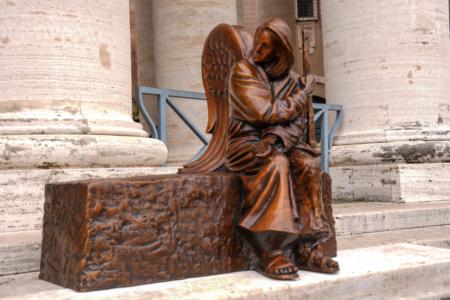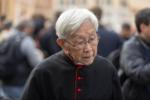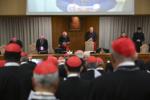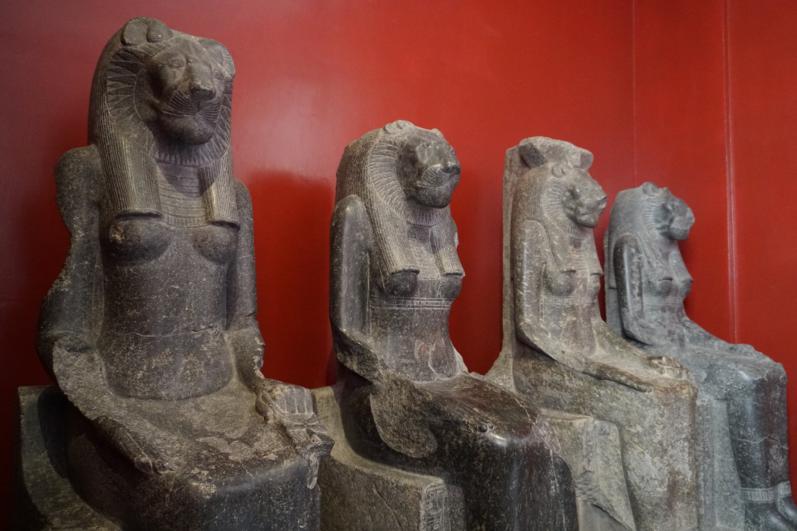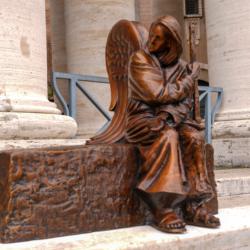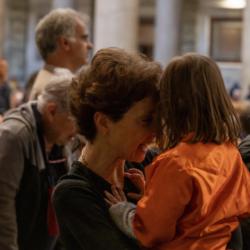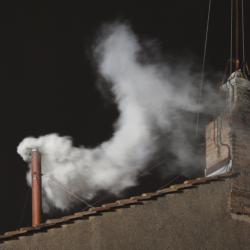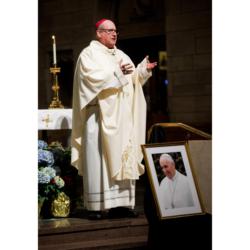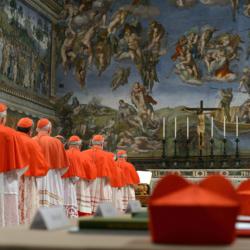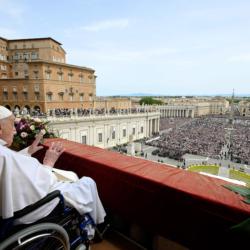Vatican Museums aid conservation efforts of toppled temple in Luxor
VATICAN CITY (CNS) -- With the body of a woman and the head of a lioness, the ancient goddess Sekhmet was the protector of pharaohs, the patroness of physicians and the commander of diseases and plagues: able to cast them or cure them at will.
Countless carvings of her image were created in ancient Egypt as an idol for worship to try to appease her wrath, receive strength and ensure her protection on earth and in the afterlife.
That is what King Amenhotep III -- a 14th-century B.C. pharaoh and Tutankhamun's grandfather -- had in mind when he constructed the largest and most elaborate funerary complex ever built at the time in the region.
Scholars estimate at least 700 statues of Sekhmet sat or stood guard throughout his funerary temple, called "The House of Millions of Years," offering the deceased pharaoh power and protection "like an army" for millions of years in the afterlife, said Alessia Amenta, Egyptologist and curator of the Vatican Museums' Department for the Antiquities of Egypt and the Near East.
She and others explained the latest developments in the "Sekhmet Project," which she spearheaded in 2017, during a presentation at the museums May 4.
The Vatican's Gregorian Egyptian Museum has 11 statues featuring Sekhmet, which were recently restored with funding from the Canadian chapter of the museums' Patrons of the Arts program. The statues come from the king's funerary temple and were acquired by the museums in the early 19th century from the Cavazzi-Guidi collections.
The cleaning, preservation and cataloging of the huge pieces of hard granodiorite stone inspired Amenta to delve deeper into studying not just these pieces, but also dozens in a collection in Turin's Egyptian Museum and dozens more on-site in Egypt.
Amenhotep III ordered the creation of hundreds of Sekhmet statues for his funerary temple, but they were also dispersed to other temples by his successors. Amenta said about 280 statues of the goddess have been found at Amenhotep's funerary temple, another 288 at the Mut temple and 210 scattered around collections worldwide.
A massive earthquake leveled Amenhotep's funerary complex just 150 years after it was built, so statues and broken stone were repurposed by successors, a flooding Nile covered most of the remains and "Egyptomania" among Europeans in the 19th century pilfered what was accessible.
Amenta said the Sekhmet project aims to build a database cataloging precise details and measurements of as many as possible of the 1,000 known statues in the world and then use AI-processing to reveal patterns and details about the pieces and create 3D-model images. This will provide a visible reconstruction of how the pieces may have been arranged within the temple, help decipher how the pieces were carved, and discover how construction and transport may have been organized.
It is hoped the details can assist a massive conservation project of the Amenhotep III Temple led by Hourig Sourouzian, who hopes to reconstruct the largest museum of statuary "in situ" in Egypt.
According to the Sekhmet project's details, assisting with the study and understanding of the funerary complex "will finally allow the philological relocation of the goddess' statues in their original context, contributing to the restitution of the grandiose funerary temple of Amenhotep III as an open-air museum."
"Our goal is to collaborate with the excavation to reposition all these statues in their original arrangement within the temple," Amenta told Vatican News May 4.
Archaeologists today should "let the statues talk," she said in her May 4 presentation.
Minute details and big patterns can all come together to help people today learn about past technologies, beliefs, economies and science, she said. It is like "a passport" into the past.
